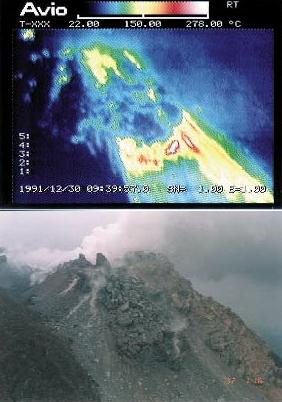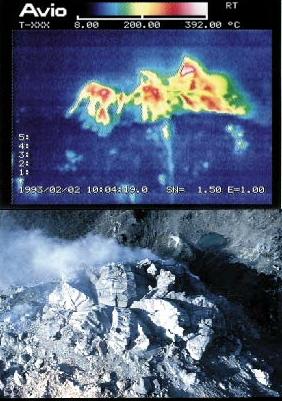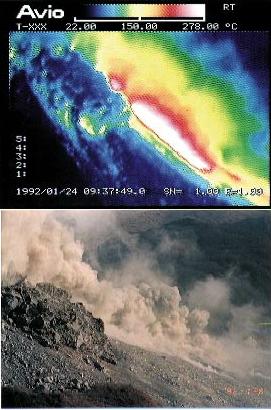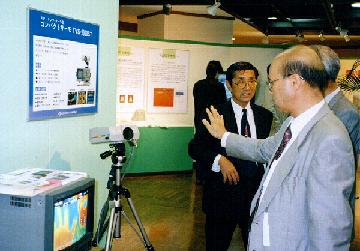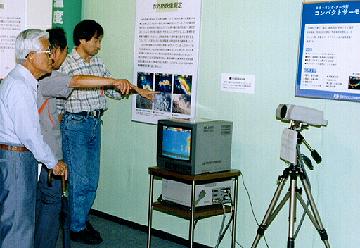
 Top of Part 4
Top of Part 4

 Previous p.
Previous p.
 Material at a certain
Material at a certain
 temperature radiates
temperature radiates
 infrared-ray
infrared-ray
 which has an energy
which has an energy
 proportional to
proportional to
 the fourth power of
the fourth power of
 its absolute temperature
its absolute temperature
 (an temperature which
(an temperature which
 fixed its origin
fixed its origin
 at 273 degrees centigrade
at 273 degrees centigrade
 below zero).
below zero).

 By making use of this,
By making use of this,
 we can get a distribution map
we can get a distribution map
 of ground surface
of ground surface
 temperatures when
temperatures when
 we observe a spectrum
we observe a spectrum
 of infrared-ray radiated
of infrared-ray radiated
 from some area.
from some area.

 An airplane is
An airplane is
 commonly employed
commonly employed
 for the observation
for the observation
 of a large area in a
of a large area in a
 short time.
short time.

 The ground temperature
The ground temperature
 distribution map obtained
distribution map obtained
 in this way is called an
in this way is called an
 aerial infrared-ray image.
aerial infrared-ray image.

 A surface temperature of
A surface temperature of
 an active volcano is
an active volcano is
 closely related with the
closely related with the
 volcanic activity.
volcanic activity.
 Therefore, an aerial
Therefore, an aerial
 infrared-ray image is
infrared-ray image is
 useful for immediate
useful for immediate
 grasp of the present state
grasp of the present state
 of volcanic activity.
of volcanic activity.
 Discovery of a new
Discovery of a new
 abnormally high
abnormally high
 temperature area
temperature area
 may lead to the prediction
may lead to the prediction
 of a volcanic eruption
of a volcanic eruption
 of which surface activity
of which surface activity
 is not yet exposed.
is not yet exposed.

 In cooperation
In cooperation
 with the Self-Defence Forces,
with the Self-Defence Forces,
 SEVO has kept taking aerial
SEVO has kept taking aerial
 infrared-ray images
infrared-ray images
 of the summit area
of the summit area
 from a helicopter
from a helicopter
 during the period
during the period
 of eruption of Unzen volcano.
of eruption of Unzen volcano.

